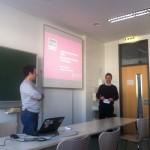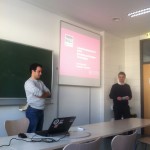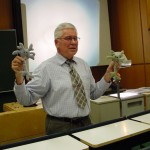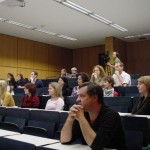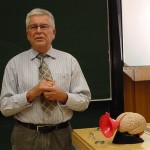Der Rückblick zum TEWI-Kolloquium von Antonio Pinheiro, U.B.I. am 23.11.2012 beinhaltet die Folien:
Abstract: The low sensibility revealed by humans to the chromatic information is well known since a long time. That fact was always explored in color multimedia systems! In particular, the early analog color TV systems always had a very reduced amount of chromatic information compared with the amount of luminance information. In this talk, an evaluation of the influence of the chromatic information on QoE of still images is presented. For that, a set of images used for testing are represented in the CIE 1976 (L*a*b*) color space because it is partially uniform and highly related with the human perceptual notion of color. After clustering the image colors, a random error of known magnitude is given to each color cluster on the chromatic components a* and b*, keeping L* constant. With this method images are not degraded by artefacts induced by color discontinuities. A calibrated true color system is used for evaluation of the individuals’ sensibility to color changes. Using the Medium Opinion Score the sensibility to color changes was evaluated and further modelled. As expected, a very low sensibility to chromatic changes was revealed. Finally, objective models for chromatic errors are discussed and the relation between the quality and the emotional state of the subjects is considered.
CV: António M. G. Pinheiro is a lecture at U.B.I. (University of Beira Interior), Covilha, Portugal. After graduated in IST, Portugal in 1988 he worked as Assistant Lecture in U.B.I. In 1998 joined the University of Essex, U.K., where, he received the PhD in Electronic Systems Engineering in 2002 under the supervision of Prof. Mohammed Ghanbari. He is a Portuguese representative in the European Union Action COST IC1003, QUALINET – European Network on Quality of Experience in Multimedia Systems and Services and was a Portuguese representative of COST – 292, Semantic Multimodal Analysis of Digital Media. He is also the coordinator of the research Group Electronic and Computer Systems of the Remote Sensing Unit. Antonio Pinheiro has lectured several courses on Signal and Image Processing and on Digital Systems Design and Microprocessors Architectures and Applications.

